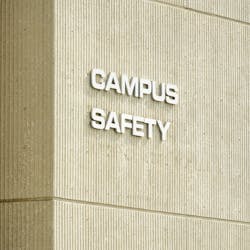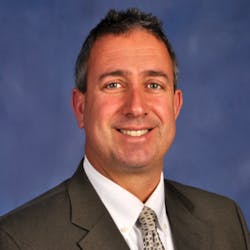The Transformation of Public Safety and Security on College Campuses
The changing face of security and public safety on today’s university and college campuses is broken down into two distinct areas of focus for this article. The first-- campus security, public safety and policing. This is a major focal point given some of the events in the history of the US. The second is the issue of the increasing burden on campus administrators to effectively manage campus physical security risk.
Campus Security, Public Safety and Policing
As we ease out of the worldwide COVID-19 pandemic and return to a new sense of normality, now is a good time to assess some of the major ways in which public safety at our institutions of higher learning has transformed in recent years. The evolution of security and public safety on university and college campuses throughout the United States has oftentimes been in response to some of the darkest days of our nation's history: The University of Texas-Austin tower shooting (1966), the murder of Jeanne Clery in 1986, and the horrific mass shootings at Columbine High School (1991), Virginia Tech (2007), Sandy Hook Elementary School (2012), and most recently at Robb Elementary School in Uvalde, Texas. Each of these tragic events were followed by a period of critical self-assessment of our respective public safety efforts and a look at a new list of lessons learned, and new best and promising practices.
Following the tragic death of George Floyd on May 25, 2020, the ensuing national and global outcry for social justice and police reform in the U.S. reached new heights, up to and including defunding and disbanding of our police departments, including many colleges and universities. This is a true turning point in our nation’s policing history, as officers are being openly criticized, politicized, vilified, and targeted, as seen in the steady rise of public verbal assaults and physical and lethal attacks.
The traditional workplace has changed dramatically in recent years. This is also true for the workplace climate of police departments. The diversity within these organizations is now expected to reflect the demographic and diversity within their respective campuses and local communities. To achieve this, agencies must aggressively seek ways to “hire right,” and to provide a workplace that will produce a good quality of work-life and reduce staff turnover and attrition. Police Chief Michael Koval, of Madison, WI has one of the highest ratios of women police officers in the United States. Women have made up nearly 30% of the Madison police force for more than 17 years. Before retiring from the force in 2019, he said, “I honestly don’t think policing will have any chance of reclaiming lost ground or winning new hearts unless we are making an all-out blitzkrieg to incorporate diversity within our ranks.”
Another layer of diversity that has challenged policing organizations in recent years is the new multi-generational workforce, which may have four to five distinct generations working together: Traditionalists, Baby Boomers, Generation X, Millennials, and Generation Z. Learning to recognize some of the individual work-related traits and characteristics of each of these generations of workers is very helpful in maintaining a workplace that is free of discrimination, harassment and bias. To minimize liability, all command staff, officers, and support staff must know and understand the various laws that affect the workplace, as well as the individual policies/procedures of the department and the organizations that they serve.
Self-assessment is difficult, but the stakes are much too high for us to “Tap-Out.” While some departments have been slow to address the many community challenges of the past several years, others have done incredible work. With a passion for training, we have welcomed this evolving challenge to re-think how we train and prepare our rank and file to provide necessary public safety services while ensuring the dignity and respect of all the communities that we serve. As public safety professionals, we must not only have the skills to be change agents, but we must also have the ethical and moral compass to “Tap-In” when we witness any event that denies social or racial justice, and/or creates an environment of harassment, discrimination or bias.
Dr. Martin Luther King, Jr. often spoke about the “appalling silence” of his generation. We all have a duty and an obligation to equip our personnel with specific communications and script messaging techniques to become “professional communicators.” We strongly believe that this must be taught and reinforced at academy training, field training, on-the-job training and in-service training for the duration of our officers’ careers. In doing so, our frontline personnel will be able to responsibly manage all communications encounters with professionalism and compassion.
As public safety and police professionals, we must examine the foundations of the workplace culture of our respective agencies. Hiring right, well-written policies and procedures, and strong supervision and leadership are all essential. While our leaders have always been expected to be highly skillful, trustworthy and competent, we are also now expected to be transparent and accountable. We must also learn about and respect all forms of differences (e.g., generational, gender, racial). Our departments must have zero tolerance for all forms of sexual harassment, discrimination and bias in the workplace (See something, Say something, DO something). Community trust is a valuable and delicate commodity, and we must all fill our community trust buckets at every opportunity.
As leaders of your respective agencies, we encourage you to model the actions and behaviors of treating everyone with dignity and respect, including fellow employees in the workplace. When change is needed, we must also provide the direction, resources and training necessary to move our departments forward and to “Tap-in” to the commonality of goodness that is still a cornerstone of our profession. By thoughtfully moving our departments forward in this critical time of “Re-Imagining” all that we do as public safety entities, it helps us all to gain the necessary buy-in from our campus communities and help avoid much of the critical and sometimes political push-back.
Managing Campus Physical Security Risk
According to NPR, about 20 students have filed a federal lawsuit against the Oxford Community School District and several school officials in a bid for "transparency and a sense of security" as they recover from the shooting and get ready for the upcoming semester. This is an interesting piece of litigation and underscores the two major considerations for campus administrators in answering the challenging question, “Is my campus security adequate?”
The first consideration is the OSHA General Duty Clause 5 (a) 1 which requires employers to furnish each of their employees with a workplace that is free from recognized hazards that are causing or likely to cause death or serious physical harm. This would apply to faculty, staff and other employees of a campus who are entitled to come to work and expect that they will return home to their families safely at the end of each workday.
The second consideration illuminated by the litigation against the Oxford Community School District directs our attention to tort law case precedent regarding premises liability. Premises liability is a legal concept that typically comes into play in personal injury cases where the injury was caused by some type of unsafe or defective condition on campus or other property.
Most personal injury cases are based on negligence, and premises liability cases are no exception. To win a premises liability case, the injured person must prove that the property owner was negligent with respect to ownership and/or maintenance of the property. In general, negligence means that the property owner did not exercise reasonable care in connection with the property, which is to say reasonable security was not implemented.
So, how does a campus administrator counter rising criminal and extremist risk levels and be able to successfully defend premises liability claims? The answer is simple – ensure a legitimate campus security (human hazard) risk assessment has been conducted, where human hazards are defined as criminals, extremists or terrorists and include consideration of both insider and outsider threats.
A security risk assessment should yield an inventory of credible security scenarios for all areas of campus such as:
- On and off-campus residence halls
- Academic buildings
- Administrative buildings
- Student support buildings
- Critical infrastructure buildings
- Open campus areas
- Special events (e.g., sports, dances)
The purpose of this article is not to provide detail regarding security risk assessment mechanics, but to offer more information by viewing this blog article which details the fundamental building blocks (https://www.securingpeople.com/security-risk-assessment/threat-vulnerability-risk/).
Campus administrators should not assume that the campus security, public safety or police department is capable of conducting a valid and reliable security risk assessment. Whether the risk assessment is conducted internally or outsourced to an independent consultant, some questions that can be asked to validate the capabilities of the risk assessment facilitator would be:
- What methodology will be used to determine results? Acceptable methodologies might include ASIS Risk Assessment Guidelines, ISO 31000, or a comparable methodology using steps contained in Sandia National Laboratories (https://ip.sandia.gov/techpdfs/RAM%20Market%20Sheet%20SAND%202010%205794P.pdf)?
- What is the system for determining the likelihood of incident occurrence, and the consequences associated with an incident?
- How and by what standards will the facilitator determine how well the campus is prepared to prevent an incident or where an incident cannot be prevented, ensuring there are proper response protocols in place to respond, contain and mitigate an event in progress?
- How will the results of the assessment be documented?
- Will there be cost estimates of recommendations and a priority and phasing plan to inform a master plan?
In closing, in our opinion, two significant priorities for campus administrators are 1) focus on ensuring security, public safety and/or policing staff is properly equipped to properly and efficiently respond to criminal threats in line with community response expectations and that they are trained, transparent and accountable to the communities served; and 2) being prepared to have a credible answer to challenges from various stakeholder groups both internally and externally to demonstrate that campus physical security is adequate using a methodology that will withstand the scrutiny of a legal challenge in a court of law.
About the authors:
Struble recently retired after a 30-year career in higher education public safety. He is also a senior trainer for the National Crime Prevention Council (NCPC) and provides security assessment and consulting services to colleges and universities throughout the United States. Lee can be reached by email at [email protected] or www.wsmtrainers.com.
About the Author

Frank Pisciotta
Frank Pisciotta, CSC, is president of Business Protection Specialists, Inc
Frank Pisciotta is president of Business Protection Specialists, Inc., a global independent security consulting firm specializing in developing global security programs for multi-national organizations. The firm supports global clients with risk assessment and security design services including the specification of security technology in various sectors. Frank has managed over 5,500 security-consulting engagements in his more than thirty-five-year consulting career. Frank possesses a master’s degree in public administration and a bachelor’s degree in criminal justice and was board-certified in Security Management by the American Society for Industrial Security as a Certified Protection Professional in 1994. He is a past President of the International Association of Professional Security Consultants. Frank was the eighth person in the United States to achieve the Certified Security Consultant designation.

Lee Struble
President of WSM Trainers and Consultants
Lee Struble is President of WSM Trainers and Consultants (est. 1996). He recently retired after a 30-year career in higher education public safety (Nazareth College, Monroe Community College, Rochester Institute of Technology and St. John Fisher College). He is also a senior trainer for the National Crime Prevention Council (NCPC) and provides security assessment and consulting services to colleges and universities throughout the United States. Lee resides in Rochester, New York.




